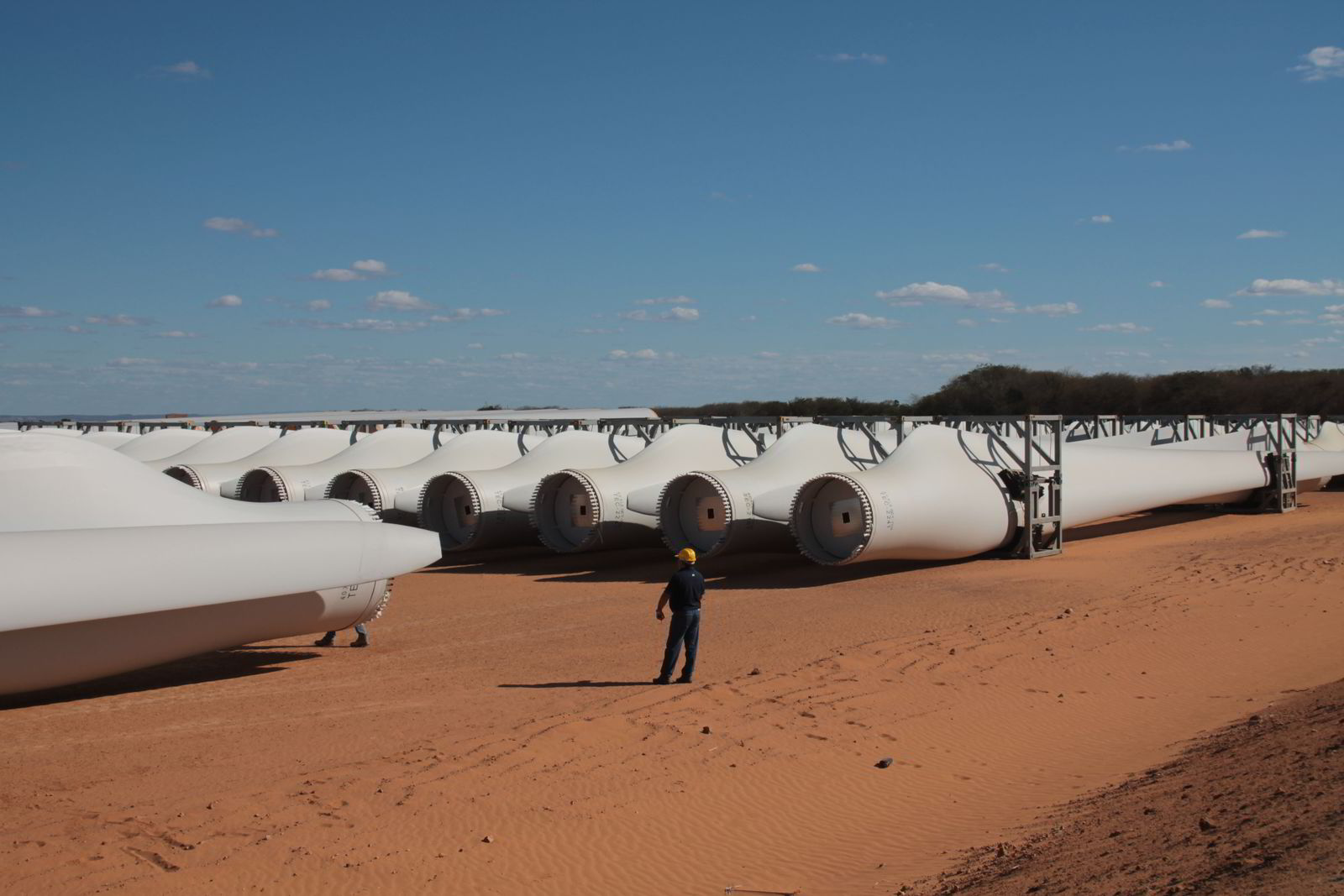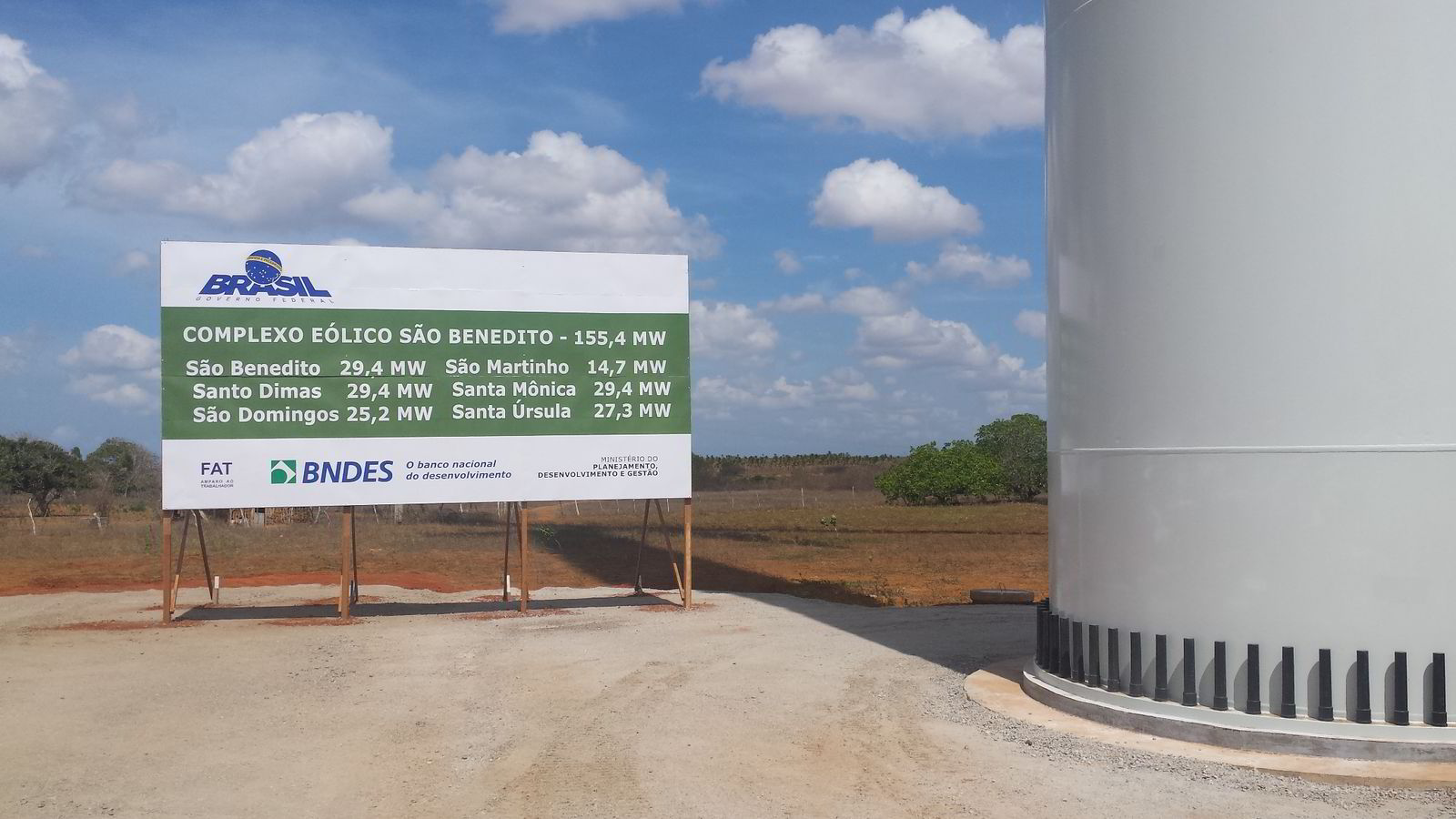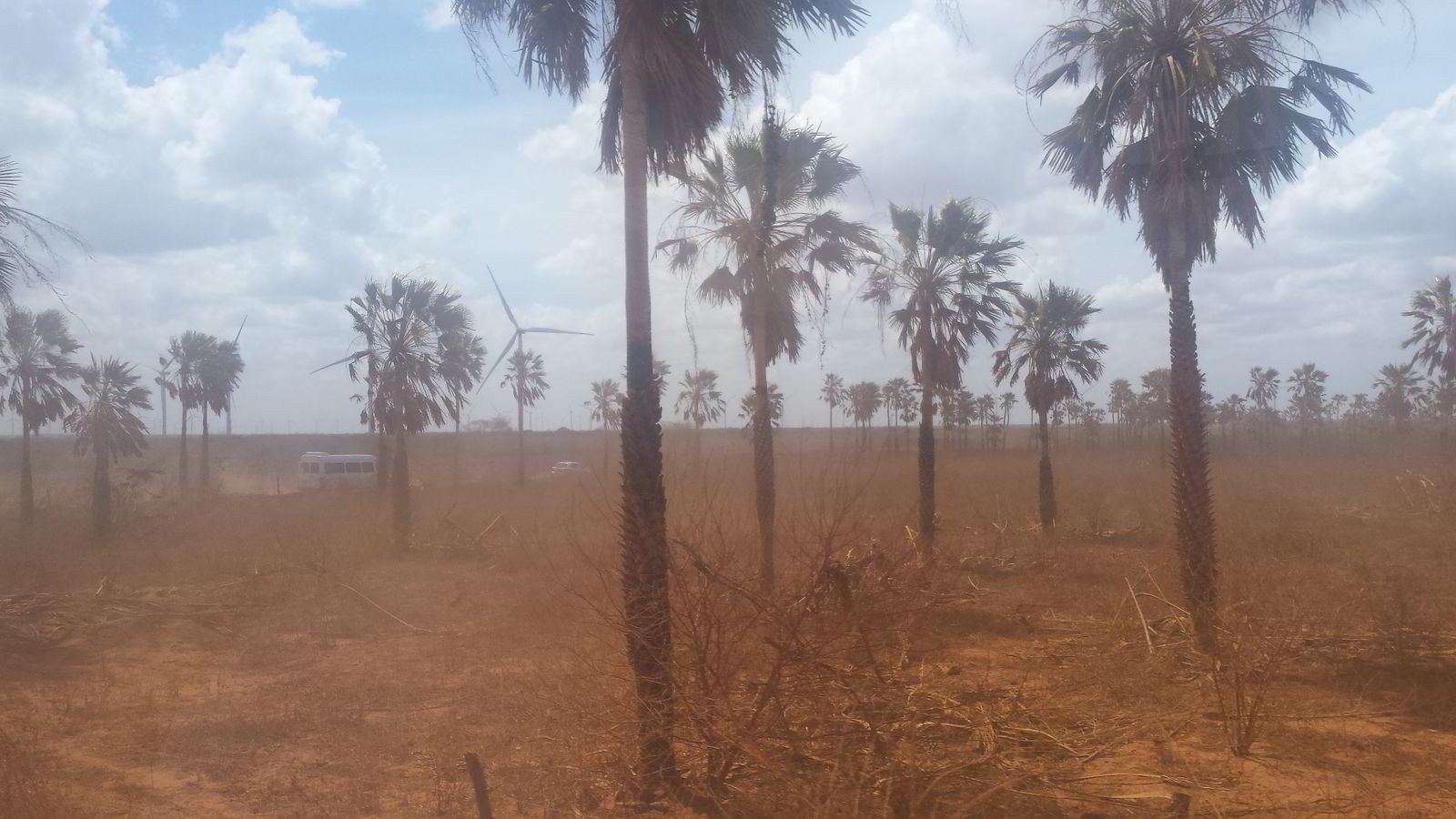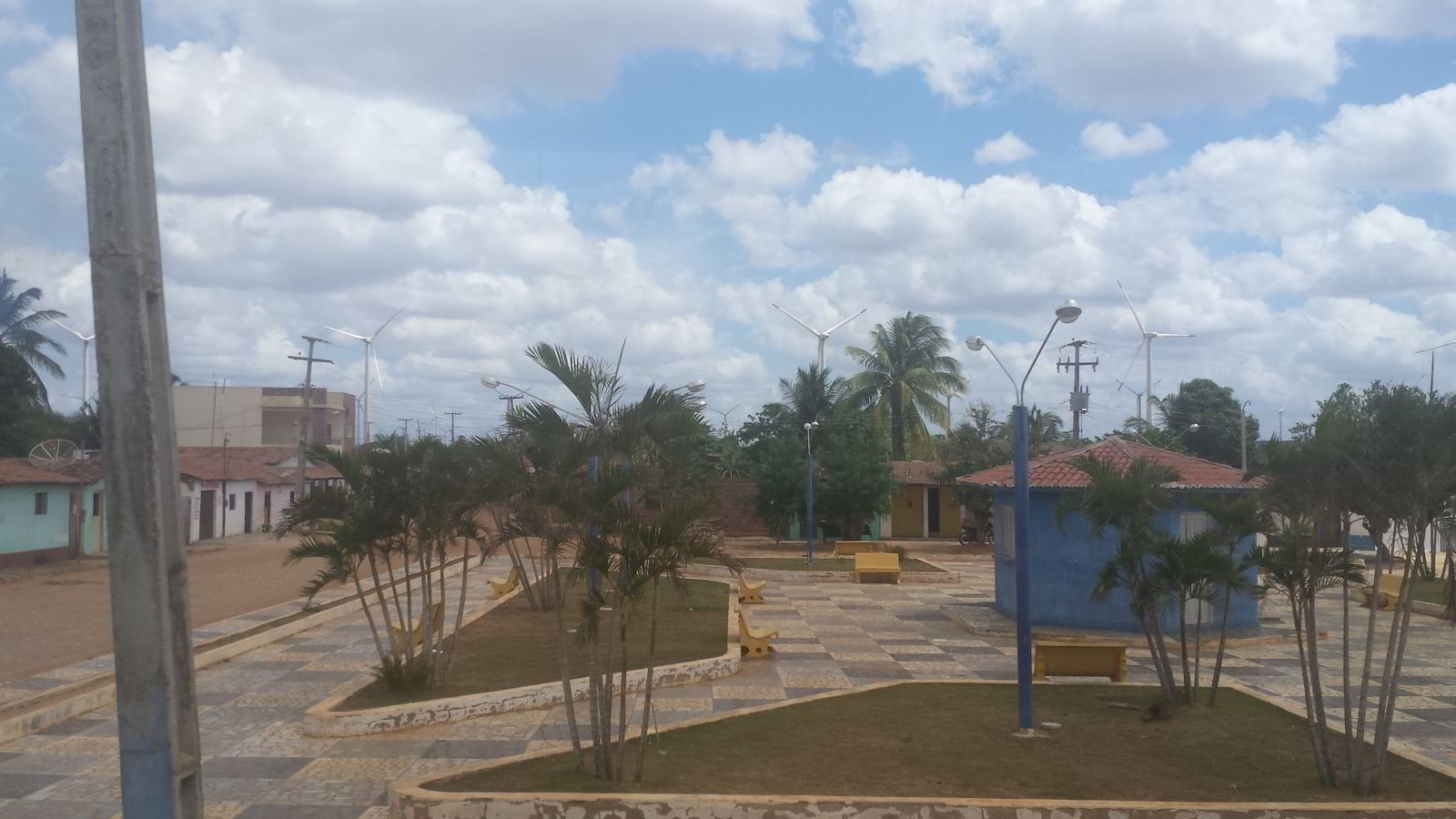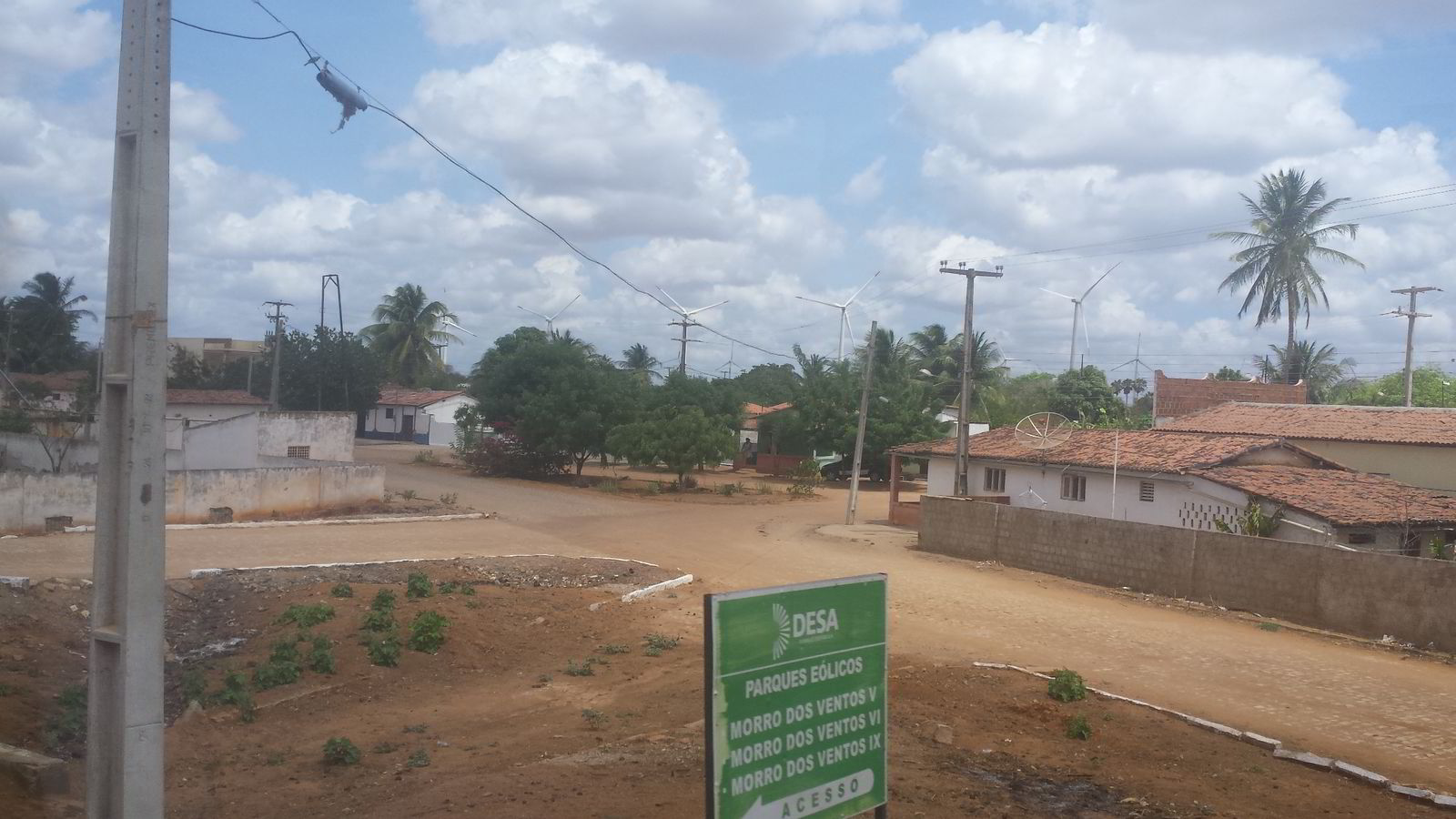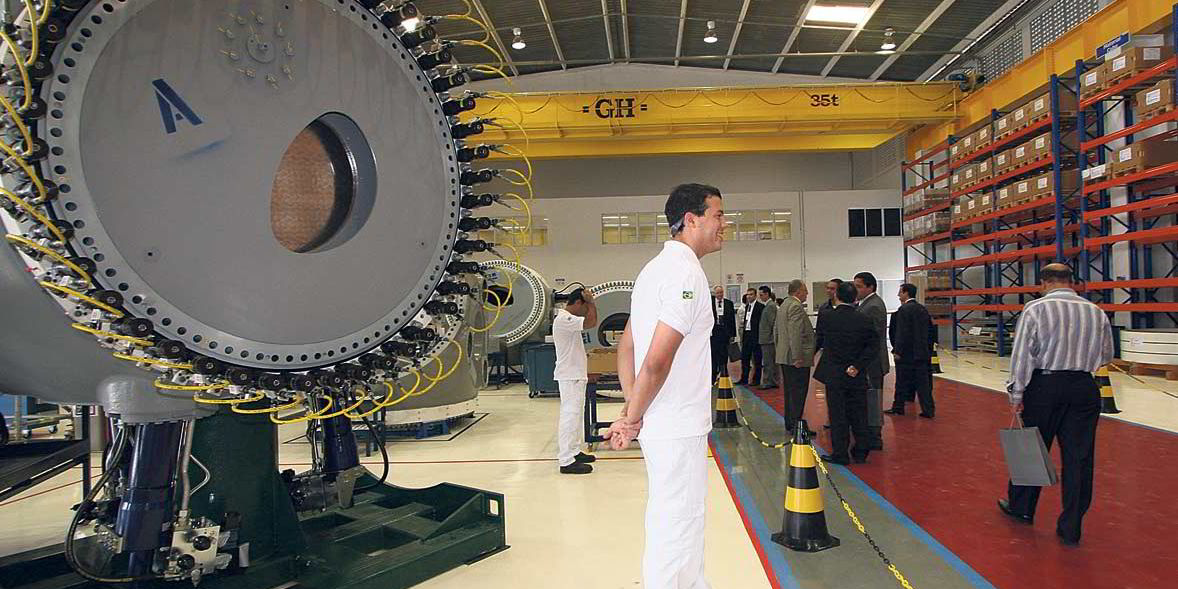Brazil’s Northeast is twice blessed: it has among the highest solar irradiation in the country and, mainly at night, its steadiest winds. But it is also damned, as every few years it faces multi-year droughts.
For this reason the nine Northeastern states – which account for 25% of Brazil’s 200 million population – have been among the poorest, least developed historically.
In the past decade, however, this seemed to be changing thanks to a drive for income redistribution backed by robust industrial and energy policies, including the promotion of wind and solar power.
By the end of 2016 the region accounted for over 80% of Brazil’s 11GW wind capacity and will be the home to the country’s largest solar PV plant in 2017, at more than 200MW.
As you drive through Piauí or Rio Grande do Norte to visit the wind power developments, you see a land devastated by almost five years of drought. The thorny, leafless vegetation is metal-grey while green can only be seen around the muddy, drying reservoirs, or in a few well-kept gardens.
Government investment in ubiquitous family rainwater reservoirs and trucks for drinking water distribution has averted a disaster. But investment in wind has achieved a lot more than expected: it has created tens of thousands of local jobs and raised revenue for regional city councils.
The mayor of Simões in Piauí state, who I visited in 2015, proudly showed off a miniature wind turbine on his desk, and boasted of new revenue for caterers, hotel owners and local shops. His next battle would be to guarantee that the wind developers keep on coming.
Wind companies are well aware of their social role, highlighting the mandatory community programmes in their sustainability reports and Facebook accounts.
In the wind districts, where income is significantly below the regional average of R$1,200 ($367) a month, these companies pay at least a minimum wage (of R$800 monthly) for land leases until the wind farms are built.
After that, the “lucky” landowner will receive 1.5% of all revenue generated by each wind tower they host for the next 20 years – a fortune for smallholders used to planting the hardy manioc or raising caprines.
Earlier this month, as I drove to Brazil’s largest wind district inland of Rio Grande do Norte, it was no different to Piauí, where I had been a year earlier. The empty, dust-covered villages on the way contrasted with the shiny 100-metre wind towers and tractor-owning farmers seen only around the wind farms.
In Ceará and Bahia brand new nacelle assembly plants were in full swing as hundreds of newly trained workers processed truckloads of incoming parts made in the industrial state of São Paulo.
In western Bahia state, a city council official in sleepy Tabocas do Brejo Velho even complained of traffic problems because of the hundreds of solar panel-laden trucks that were crossing the city bound for the Ituverava solar plant. “The solar power company rebuilt the road to the plant’s location,” the official told me.
A virtuous cycle indeed – complementing Brazil’s famous Bolsa Familia programme which pays under R$100 per child to mothers who keep their kids at school. The impression certainly is that the renewable investments help to stave off tragedy in Brazil’s parched Northeastern dust-bowl.
But in 2016 no new wind or solar projects were contracted and EPC companies, wind developers, mayors, factory workers and local commerce are looking at a horizon somewhere in 2019 to see the end of the cycle. After that, not a single bolt, flange or blade is scheduled for delivery to Rio Grande do Norte, Ceará, Pernambuco, Piuaí or Bahia.
The Michel Temer administration has decided to discontinue annual tender policies in the face of plummeting power demand.
In the air-conditioned offices in Brasilia and Rio de Janeiro, a debate has been raging for months over whether the government should use reserve tenders to diversify Brazil’s power mix, despite the troughs in demand curves on their graphs.
Calculations of how much distributors were “over-contracted” made the April utterances of Temer’s 32 year-old energy minister, Fernando Coelho Filho, seem just like your typical politician’s empty promises: renewables are important for creating jobs and bringing back growth, he said back then.
Brazil’s newly-created wind and solar industry elite were impressed by Coelho’s “generational fight against climate change”. “He understands what solar power can do because he is from Pernambuco” [the Northeastern region’s second most industrialised state], some said.
So investors reaffirmed their presence in Coelho’s only reserve renewable energy tender in December, and were even preparing million-guarantees for 21GW of wind 13GW of solar PV registered, as it looked like the roller-coaster year of 2016 could possibly end back on track.
But less than a week before the tender it was up to Coelho’s number two, Paulo Pedrosa, to announce the bad news: no auction. New calculations, he claimed, showed that contracting new wind or solar now for 2019 would be too expensive for Brazilians to support.
Although the excess capacity is contested, the government went even further in rocking the boat. The technical report published on the day of the cancelled tender said clearly that new tenders will depend on calculations and solutions for this oversupply. Bear in mind that economic recovery is not expected until the end of 2017.
So Brazil will enter 2017 as it ended 2016: with uncertainty over the continuation of its renewable energy policies. Officially, they are still in place and Brazil’s 23% non-hydro RE supply target for 2030 is still on.
But as we move closer to 2018, orders in factories and the hiring of local labour will be grinding to a halt. For sure, the government will increase its poverty and drought relief in the Northeast, but large renewable multinationals will start doing their sums to see whether it’s safer to invest in Brazil, Argentina, Chile, Mexico or Colombia.
At first sight, the government is right. There is no point in contracting power if there is no demand.
But a promise not kept can cost more than the billions in new investments. It could cost lives, because of lost income to locals. And that would be a far higher price to pay than a R$100 or so annual surcharge on the power bills of the wealthiest Brazilians.
In Dispatches, Recharge journalists offer a personal insight into the issues shaping the development of renewable energy around the world
